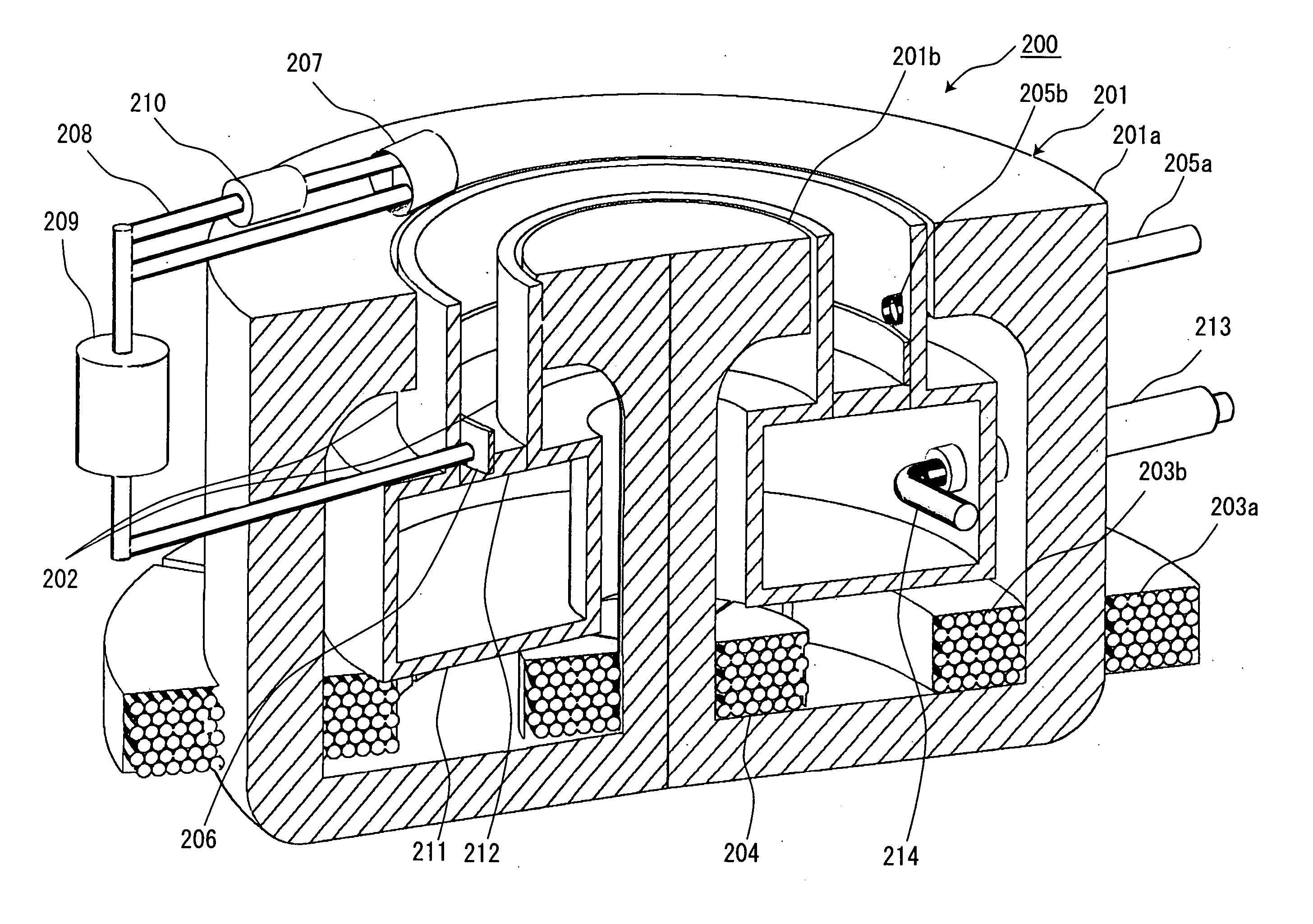Two-stage hall effect plasma accelerator including plasma source driven by high-frequency discharge
a plasma accelerator and plasma source technology, applied in the field of plasma accelerators, can solve the problems of deterioration in performance, increased weight undesirable from the standpoint of space systems, and the initial difficulty of single-stage hall-effect plasma accelerators subjected to high temperatures to achieve such desirable characteristics
- Summary
- Abstract
- Description
- Claims
- Application Information
AI Technical Summary
Benefits of technology
Problems solved by technology
Method used
Image
Examples
Embodiment Construction
[0135] With reference to the drawings, a high-frequency discharge plasma generation-based two-stage Hall-effect plasma accelerator 200 according to one embodiment of the present invention (hereinafter referred to as “two-stage Hall-effect plasma accelerator 200” for brevity) will now be described.
[0136]FIG. 4 is a partially cutaway perspective sectional view showing the structure of the two-stage Hall-effect plasma accelerator 200. FIG. 7 is a combinational diagram of an electric circuit and a schematic section of the two-stage Hall-effect plasma accelerator 200. The two-stage Hall-effect plasma accelerator 200 comprises a pole piece 201, an acceleration channel 202, a coil 203a, a coil 203b, a coil 204, a propellant feed port 205a, a propellant discharge port 205b, an anode 206, a cathode 207, a wiring 208, an acceleration power source 209, a neutralizer power source 210, a cavity resonator 211, a high-frequency wave transmitting window portion 212, a waveguide 213, a high-frequen...
PUM
 Login to View More
Login to View More Abstract
Description
Claims
Application Information
 Login to View More
Login to View More - R&D
- Intellectual Property
- Life Sciences
- Materials
- Tech Scout
- Unparalleled Data Quality
- Higher Quality Content
- 60% Fewer Hallucinations
Browse by: Latest US Patents, China's latest patents, Technical Efficacy Thesaurus, Application Domain, Technology Topic, Popular Technical Reports.
© 2025 PatSnap. All rights reserved.Legal|Privacy policy|Modern Slavery Act Transparency Statement|Sitemap|About US| Contact US: help@patsnap.com



